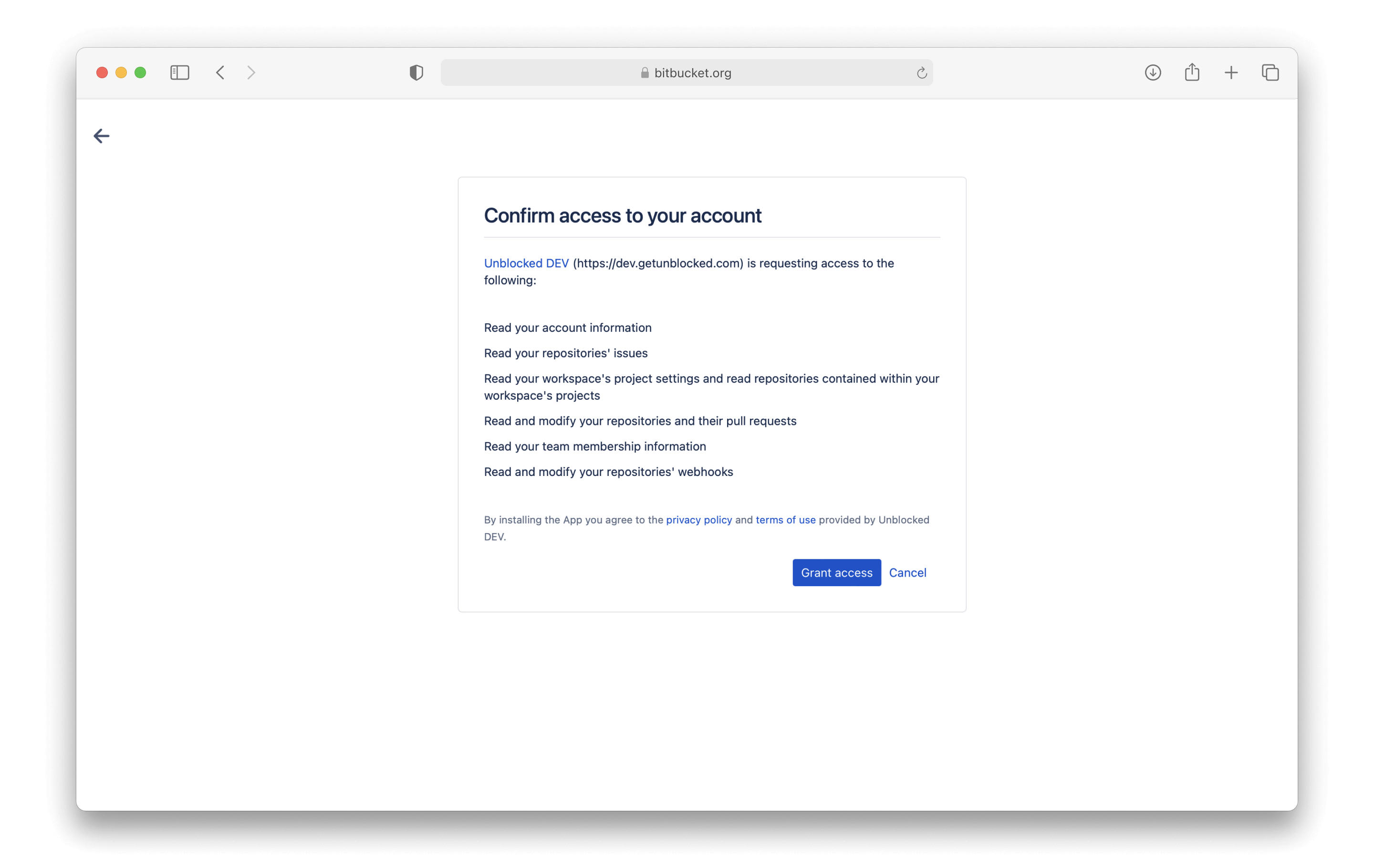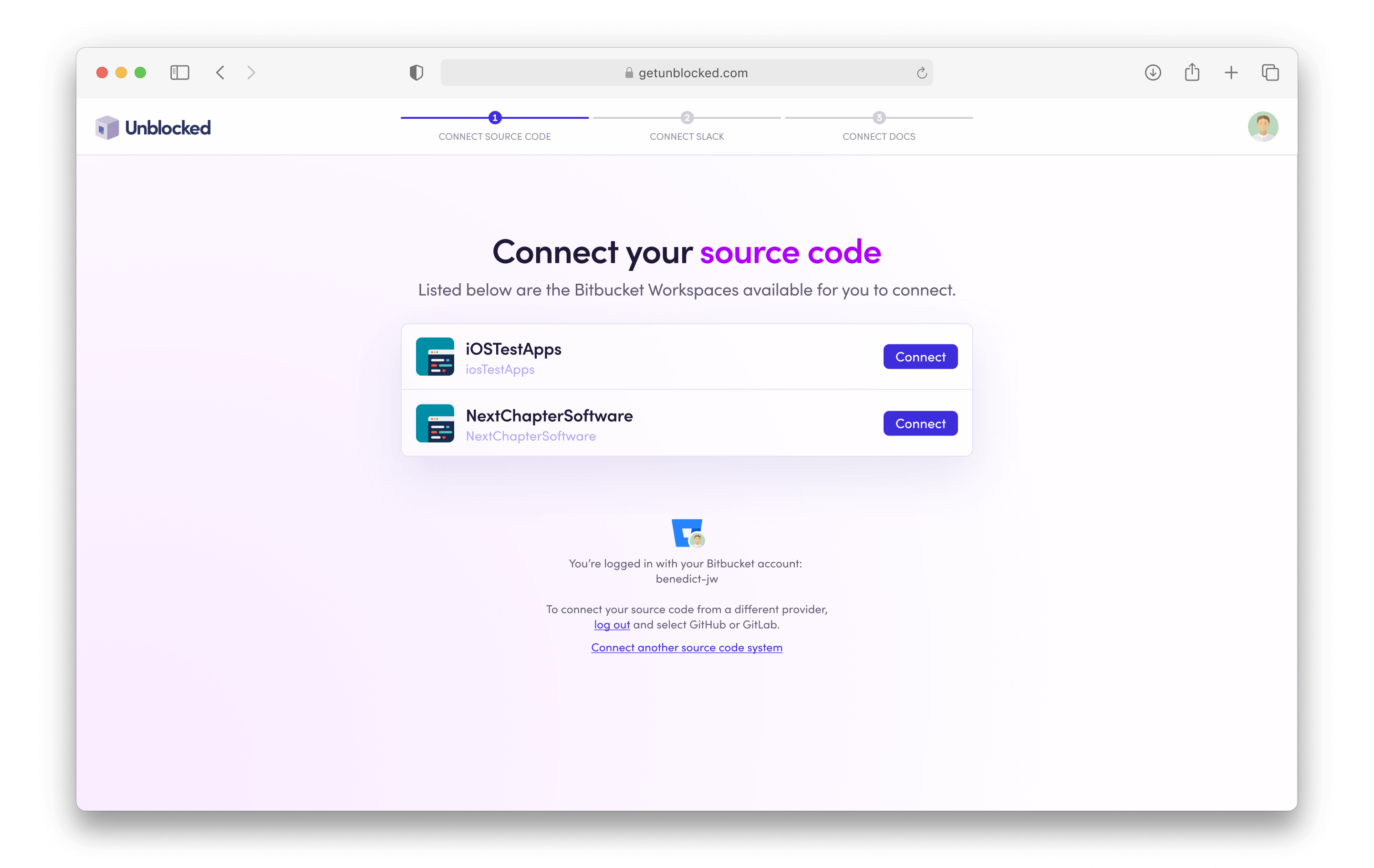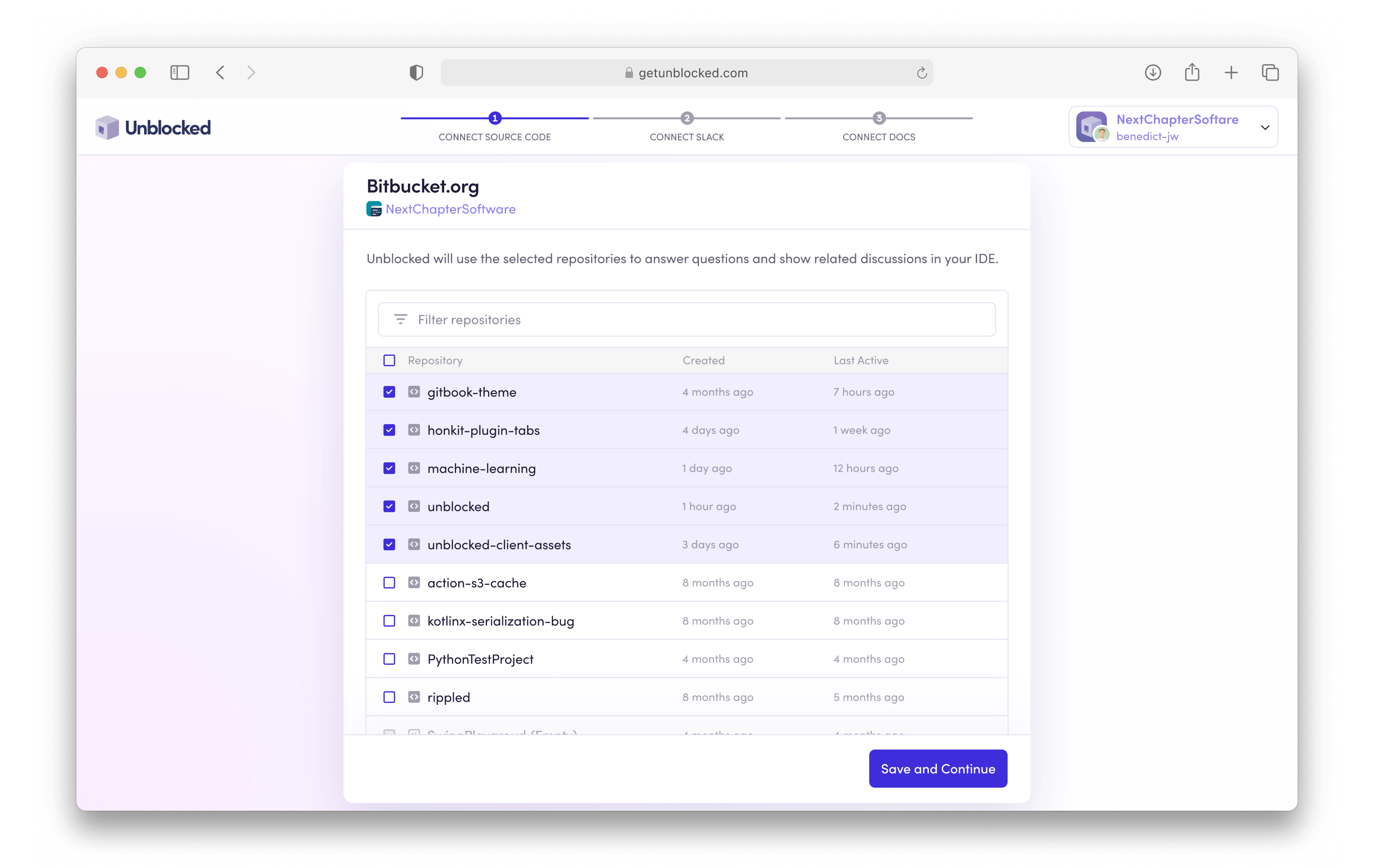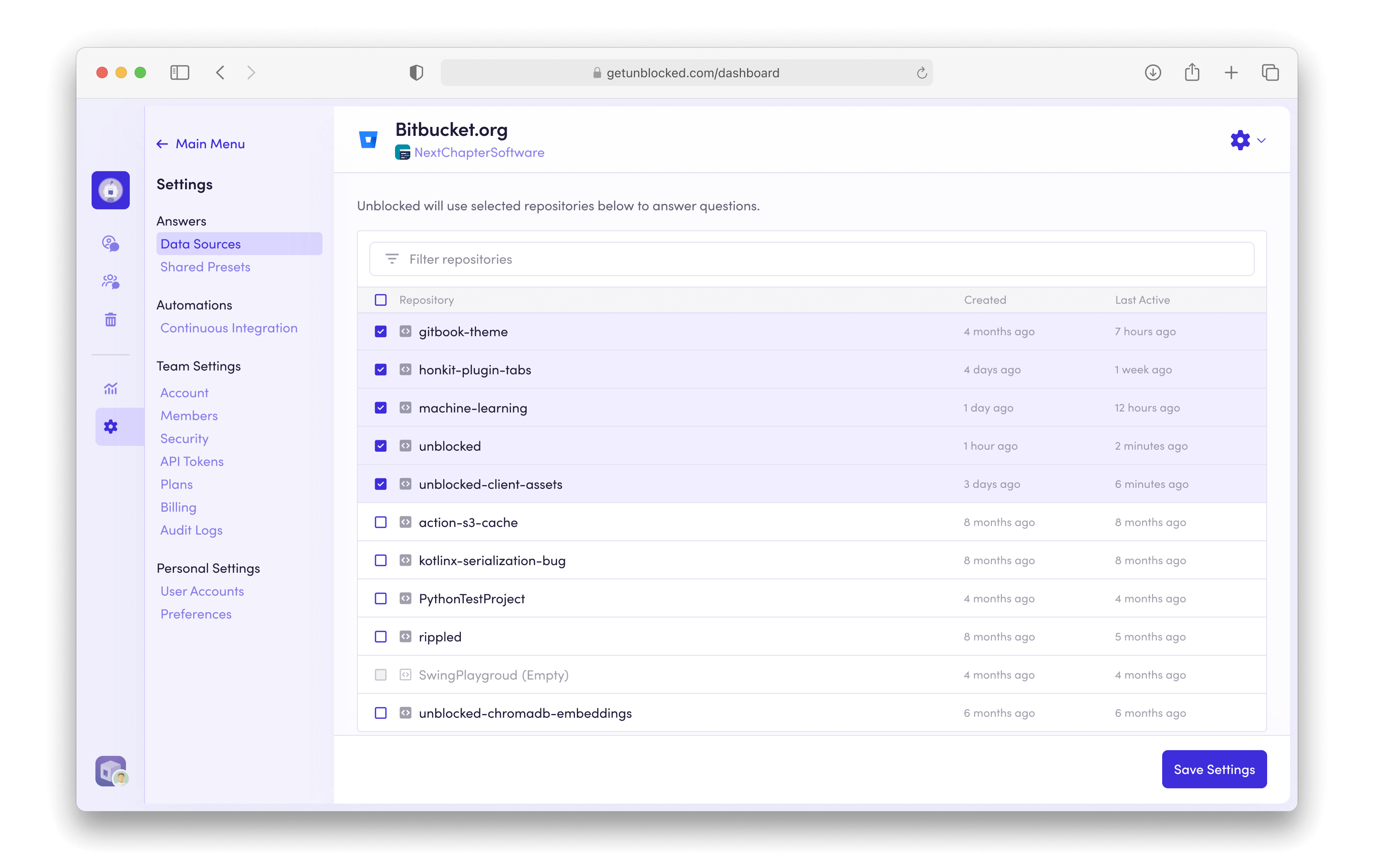- Unblocked refreshes your team’s data index as you make changes to your codebase. This means that answers to questions will reflect the latest updates to your codebase, while also taking into account your code’s history.
- Any relevant pull requests will also be referenced throughout Unblocked alongside the discussions you or your teammates have with Unblocked. As your team works on parts of your codebase, Unblocked provides notifications for quick access to pull request discussions that people are participating in. This is specifically something you’ll notice in the Mac app or in the IDE extensions.
Connect your organization and repositories
You need to be a Bitbucket workspace administrator to install Unblocked into
your Bitbucket account
Sign in to Unblocked
Whether you sign in with Bitbucket credentials, another code repository, or your SSO provider, you first need to authenticate to Unblocked.Authorize the Unblocked app
If you aren’t logged into Bitbucket, you’ll be prompted to do so. Once you’re authenticated to Bitbucket, you’ll be asked to grant access to Unblocked. This access will allow Unblocked to read the workspaces you are a part of as well as check for repositories in those workspaces, but it won’t begin indexing those repositories yet.
Connect your repositories
Once you’ve given access to your Bitbucket account, Unblocked still needs to know which repositories you want it to answer questions about. After granting access to your Bitbucket account, you’ll be redirected back to Unblocked, where you’ll be prompted to select the workspace you want to use with Unblocked.
Unblocked preselects the repositories that have been active in the last 6
months. Forked and archived repositories are not preselected.
Generating a model for answering questions
Unblocked is able to answer questions for the repositories that it has ingested into its model. After giving Unblocked initial access to your workspace, you’ll choose which repositories it should ingest. You can also select whether all new repositories should be automatically ingested into your Unblocked model.
Managing repositories
If you decide at a later time that you want to adjust the repositories that Unblocked can access, you can always add or remove connected sources. First, click Settings in the sidebar, then Data Sources. Next select the Bitbucket. From here, you can add any repository that was not previously a part of Unblocked’s data index, or remove any that you no longer want to include. Click Save Settings, and Unblocked will reindex your code so you can get answers only on the code from your selected repositories.
Continuing Set Up
While it is certainly possible to use Unblocked without incorporating any further data sources, we strongly encourage you to include as many other systems in which you have documented or even discussed your applications. If you’re using Unblocked’s Enterprise plan, you can also connect other source code management systems to your Unblocked workspace.If you have restricted network access to your repositories, you may need to
allow Unblocked’s IP address ranges.

